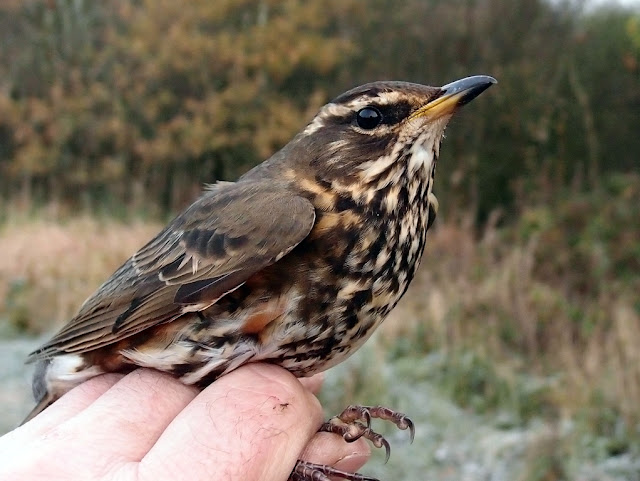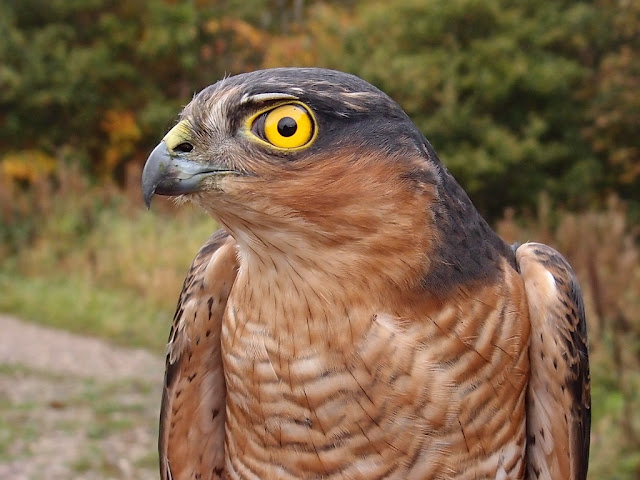I kept an eye on the garden hoping the rain would ease but it didn't slacken off sufficiently to even consider setting a net up. There was a reasonable amount of activity in the garden despite the wet and mild conditions with a small flock of Goldfinches coming and going and wasting sunflower hearts in ways only Goldfinches can. At one point a small flock of Starlings also dropped in but then, and out of nowhere, a cat appeared and caught one of the Starlings as it settled on one of the bird tables. I banged on the window to try and get the cat to release its grip but it ran off with its prize, clenched firmly in its jaws.
A few seconds later, and despite the commotion caused by the cat, I was surprised to see a juvenile male Sparrowhawk sat in a tree by some of the apples that I put. It sat there long enough for me to grab my camera and get a few ropy shots through the window before it moved further up the tree. It may have been eyeing up the Starlings or had been attracted by the commotion but there it was and on reviewing the photos on the back of the camera I could see that it was ringed!
 |
| Ringed juvenile male Sparrowhawk, what a teaser. |
 |
| Where were you ringed??? |
If seeing this ringed Sparrowhawk wasn't frustrating enough I was part way through preparing all of the vegetables when I noticed there was a male Blackcap on one of the fat cakes. This was the first Blackcap of the winter and I had been wondering when and if any would turn up in the garden given the exceptionally mild conditions. Blackcaps are just about annual in the garden in winter with most sightings starting around the Christmas period and running into the first few months of the new year.
 |
| First Blackcap in the garden this winter. |
 |
| Male Blackcap 25/12/2015, a nice Christmas present. |
27/12/2015 update - I am still a miserable old sod but I caught and ringed the Blackcap this afternoon. It was surprisingly fat and weighed 20.1g mid afternoon.








































